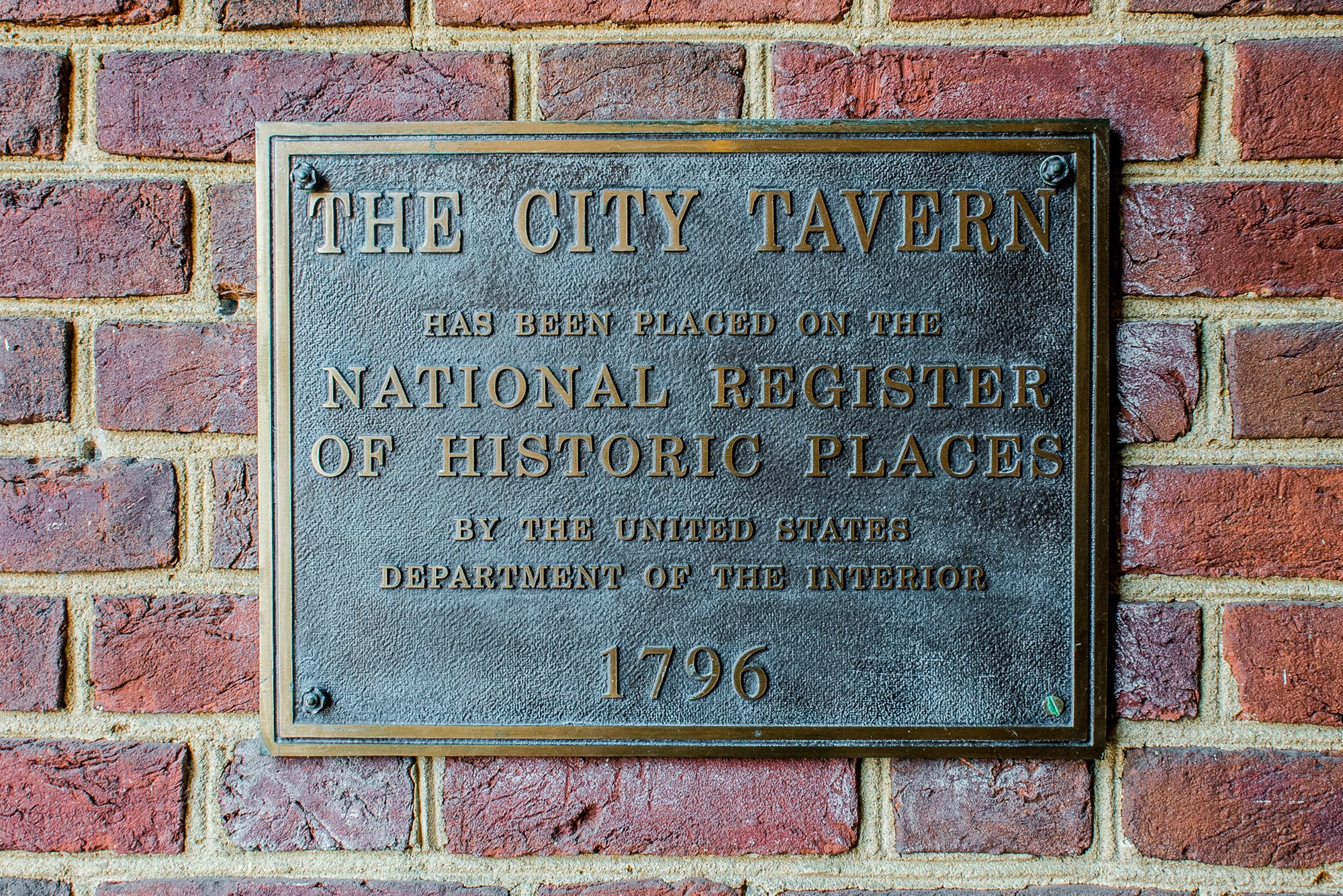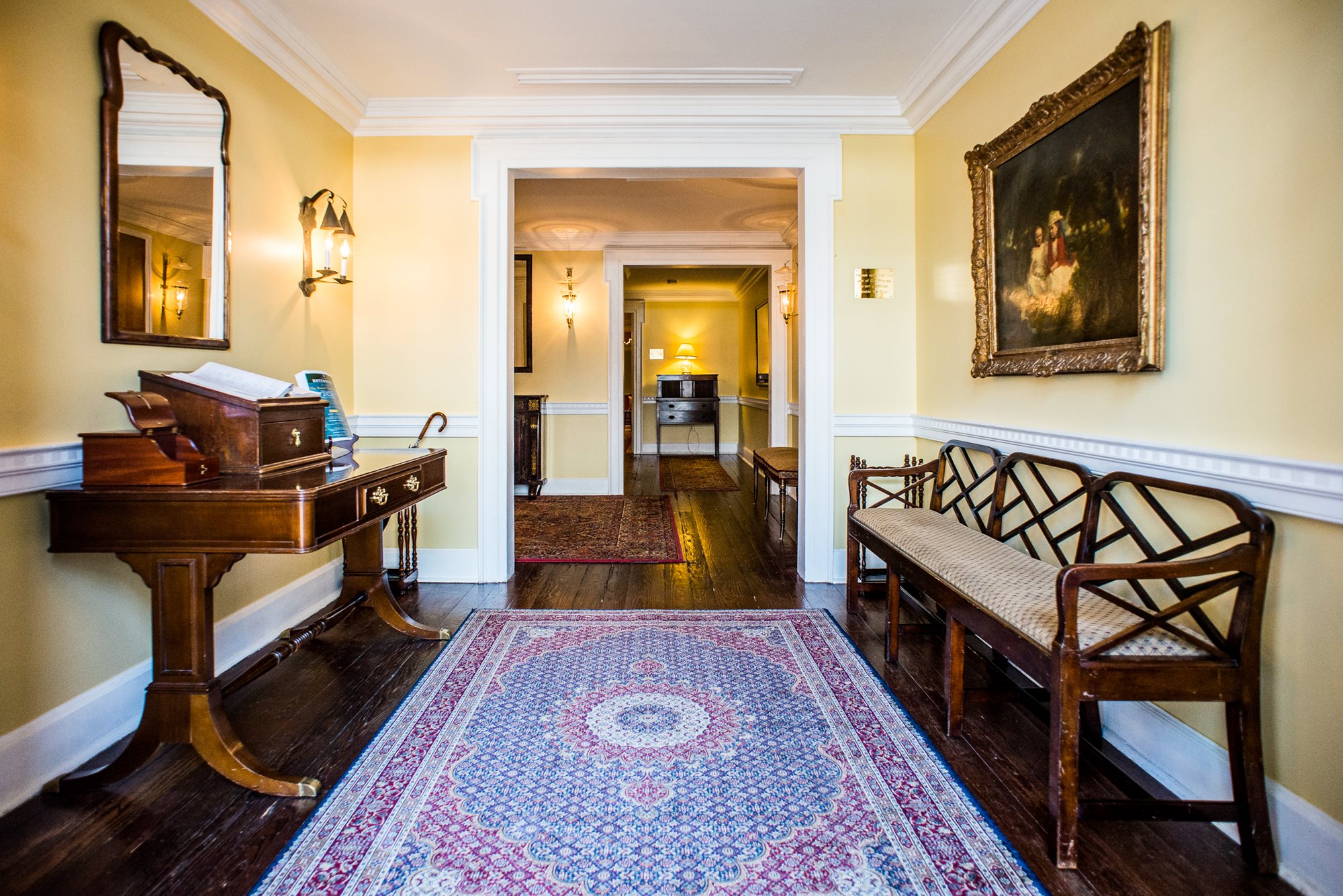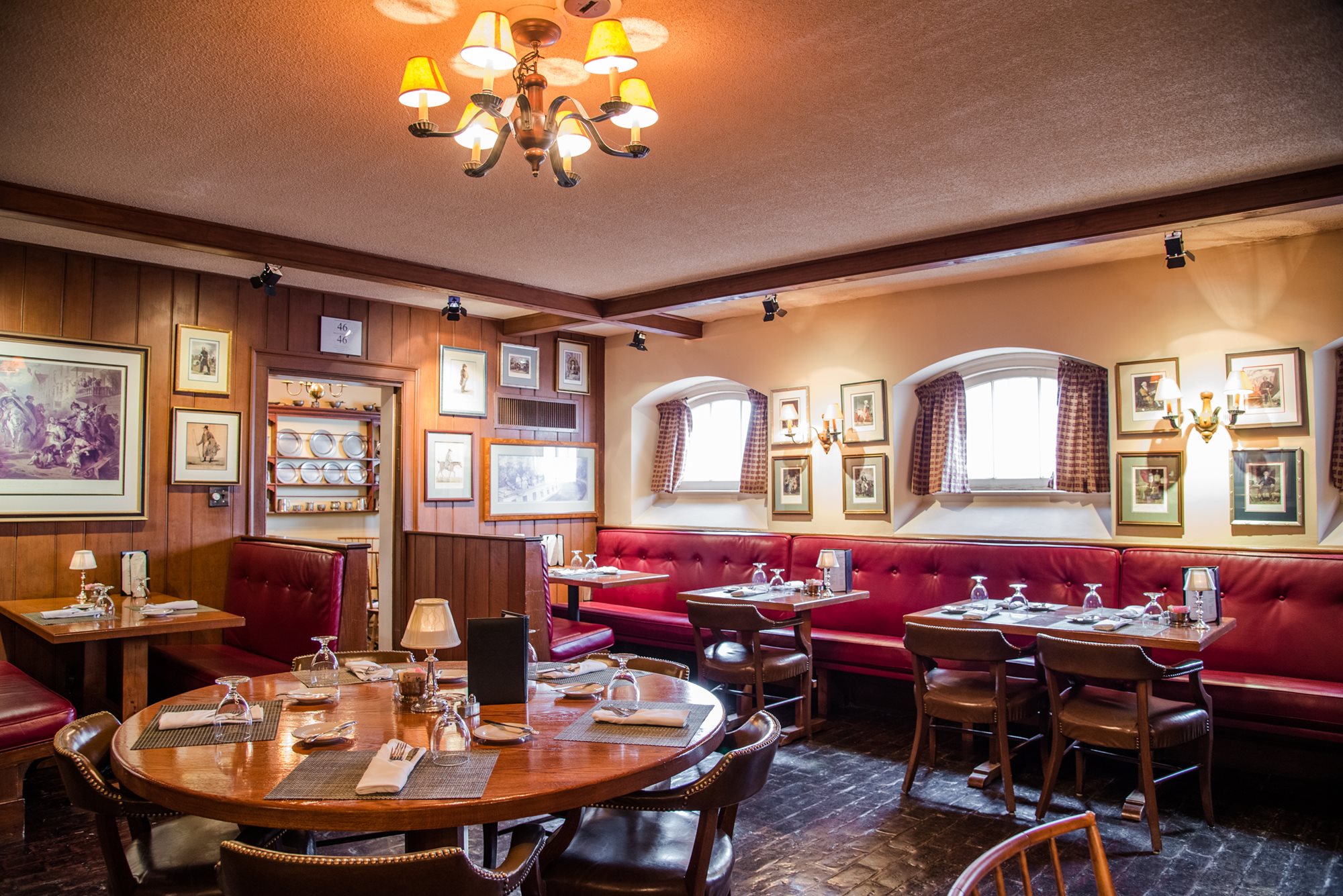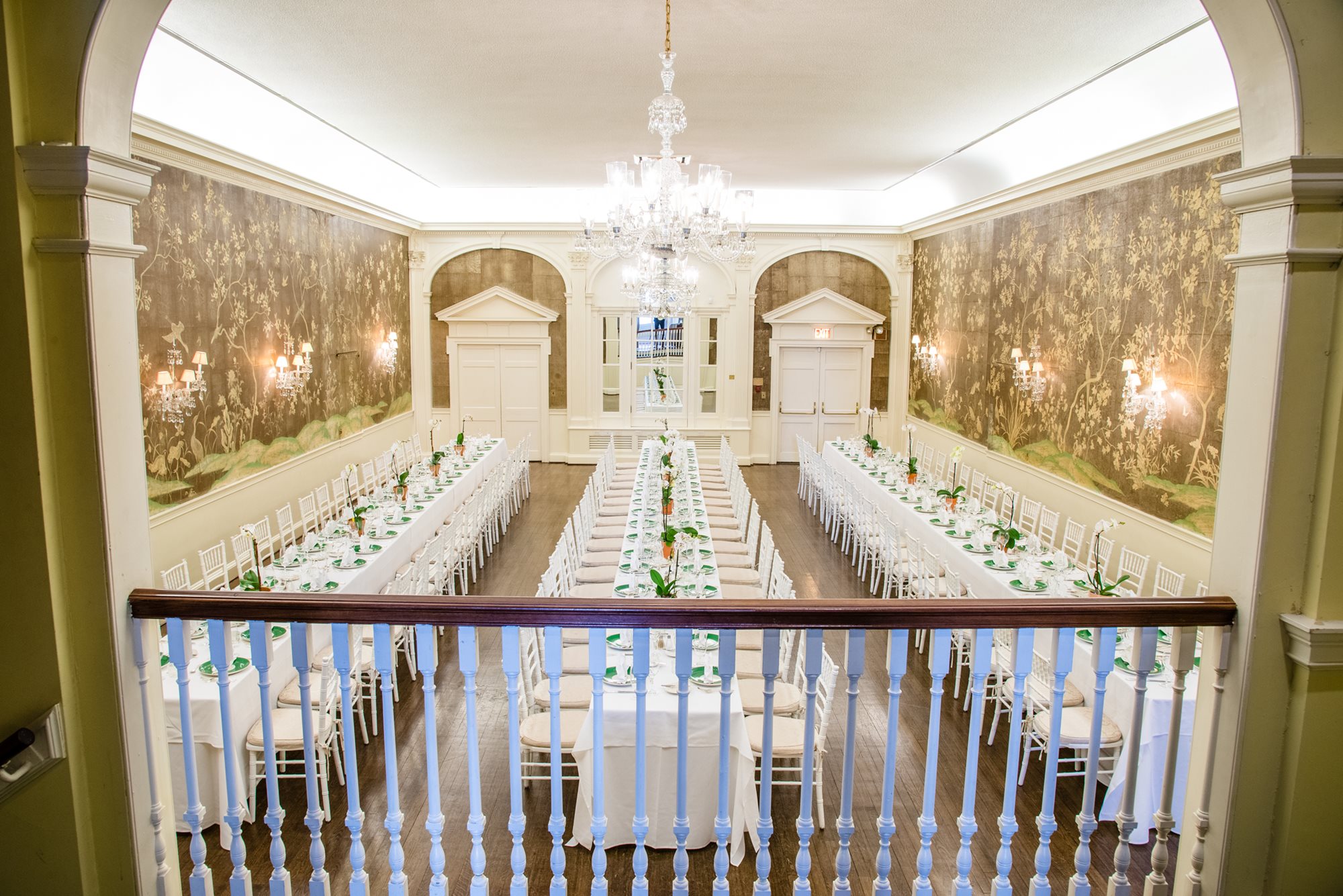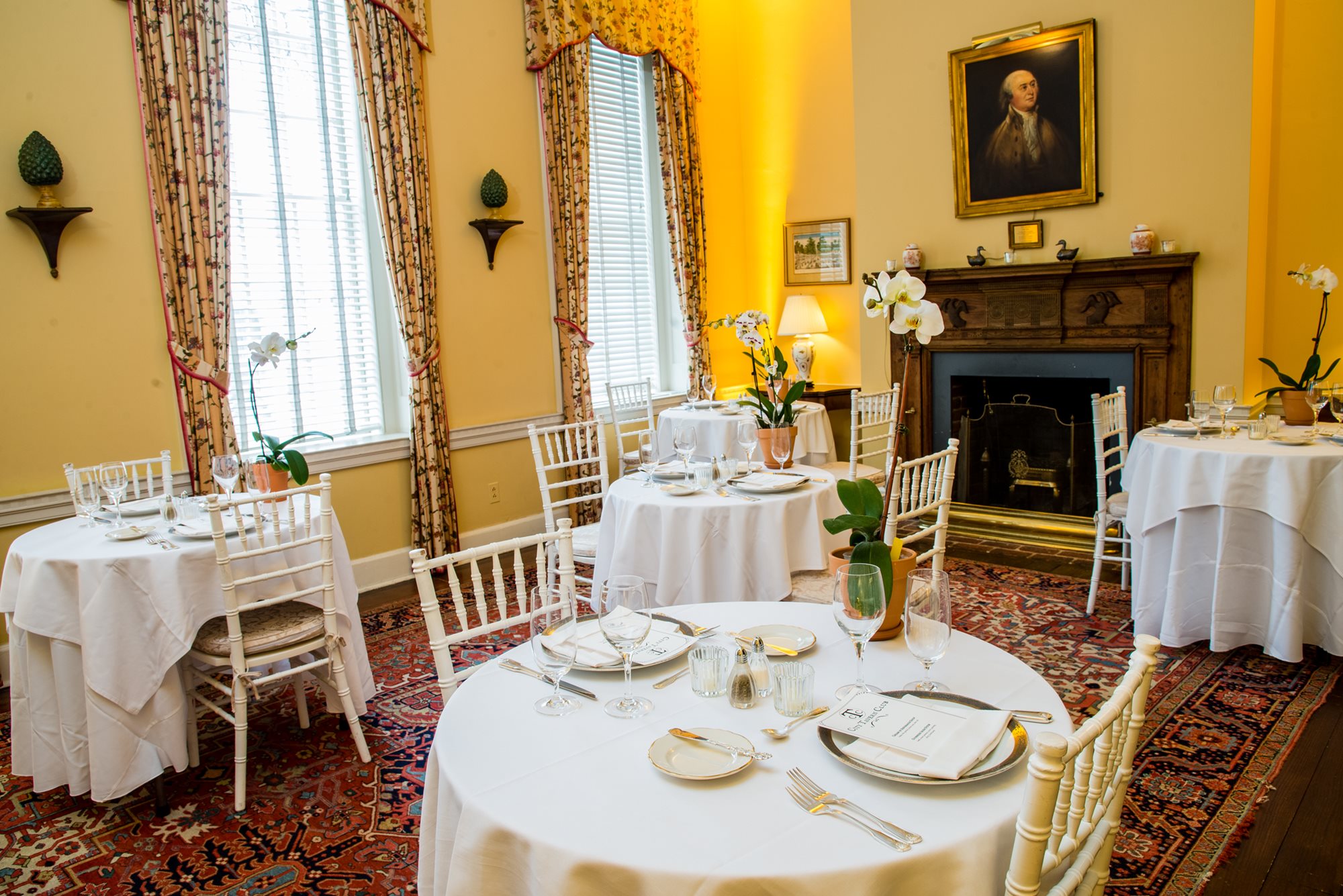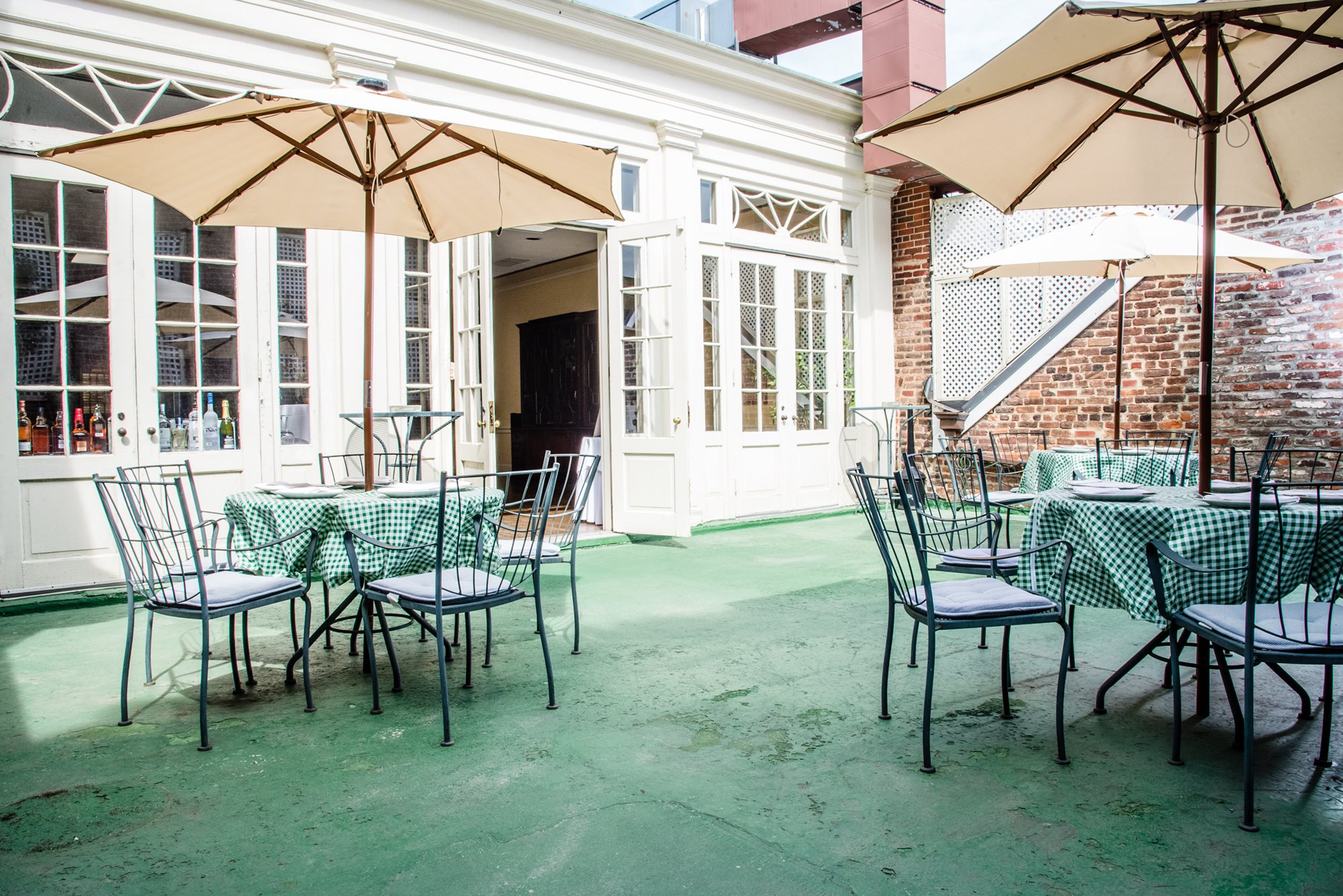Sign of the Indian King
The Sign of the Indian King, via
Outside a nondescript brick building on bustling M Street in Georgetown hangs the “Sign of the Indian King.”
Today, the building houses the City Tavern, which proclaims itself as “a private social club located in the heart of Georgetown. The Club provides fine dining, elegantly appointed rooms for entertaining, popular events, and a diverse membership.” In 1959, the building was set for demolition to make way for a parking lot. A group of locals discovered the original federal architecture, founded the City Tavern Association, and pushed for preservation.
The City Tavern Club today, via
At some point between February 1795 and December 1796, a brick tavern was built near the corner of modern-day M Street and Wisconsin Avenue to keep up with the need of Georgetown’s growing lawyer and politician population for meeting places. The owner by 1796 was Clement Sewell, a man from Maryland who had previously been living and working in the neighboring Fountain Inn and hostel. For a brief period, the new tavern was the site of Georgetown Corporation and Mayor’s Court meetings-- effectively making it the City Hall of Georgetown for that time.
Over the next few years, ownership of the tavern changed hands a few times before landing with Joseph Semmes after a period of vacancy. Semmes reopened the tavern with a its new Indian King sign (though it was more often called Mr. Semme’s Tavern). Apparently there were Indian King and Indian Queen taverns up and down the Eastern Seaboard-- the most famous seems to be the Indian King Tavern in New Jersey, which was named for Lenape chiefs who had ensured the survival of white settlers from Europe. The sign only hung for seven years; in 1808, the tavern’s name changed to the Columbian Inn.
The Indian King Tavern Museum in Haddonfield, New Jersey, via
In 1832, the Columbian Inn came under new management and became the United States Hotel; then the Georgetown Hotel; then Lang’s Hotel. By 1960, when the City Tavern Association bought the building, it housed a printing company.
The City Tavern building as it stood before restoration, circa 1959, via
For two years, the Association worked to restore the building, and in 1962, it reopened as a members-only clubhouse, where members can enjoy lunch on dinner most days of the week, as well as social events and galas. In the years since, the City Tavern Club has had Supreme Court justices, cabinet members, and ambassadors as members.
Sources
Oliver W. Holmes; ‘The City Tavern: A Century of Georgetown History, 1796-1898’; Records of the Columbia Historical Society, Vol. 50, (Washington, DC: 1980).
About the Club, City Tavern Club
The Lenni Lenape Indian Kings Commemorated in a Tavern Name, Indian King Tavern Museum







